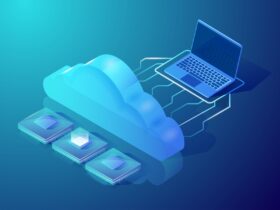Omni-channel retail (or omnichannel) is a multichannel method of making sales that aims at providing the customer with a seamless purchasing experience whether the client is shopping online from a mobile device, a laptop computer, on the phone, or in a brick-and-mortar store. The difference between the omni-channel and the multichannel customer experience is that the omni-channel experience features real integration of channels on the back end.
For instance, when a store has actualized the omni-channel approach, the customer care representative in the store is instantly able to cite the client’s previous preferences and purchases just as easily as the customer service online chat representative or the customer care representative on the phone can. Or, the client can use the laptop computer to check the store inventory on the company’s website, buy the item later using a tablet or smartphone, and pick up the item at the client’s preferred location.
Benefits of Omni-Channel Commerce for Business
Omni-channel retail has many advantages for the businesses and e-commerce in general. Here are a few:
Improved Efficiency
Developing an omni-channel retail strategy enables retailers to provide a consistent experience to their already informed clients across all platforms. It also equips the retailers to respond to their customers’ needs with a common, central database of products, offers, prices, etc.
Thus, the client can experience the brand with merchandise and promotions that are consistent across all the retail channels. Thus, the physical stores become extensions of the main supply chain. So, although the purchase occurs in the store, the customer does the research through several communication channels.
Enhanced Data Collection
When a business becomes visible across multiple channels, the result is a more personalized customer experience. When a company can track its customers using multiple channels while taking note of their preferences, it can give them better service. Thus, omni-channel retail helps companies to generate ideas on how to create offers that will encourage their customers to come out and get engaged while shopping at the physical stores. This increases the possibility of impulsive purchasing.
Higher Margins
A well-developed online sales structure will reduce the occurrence of several discounting schemes. In the traditional retailing arena, huge discounts are offered only to those items that are not getting sold quickly in particular stores. However, through omni-channel retailing, businesses can sell these products to their customers nationwide at the full price.
Integrated Data Analysis and Communication
Multiple communication channels give your business access to several information streams. As a business, you need to understand these data streams to meet your customers’ needs and demands. With analytics, you are capable of comprehending, quantifying and reviewing the communications with your clients.
6 Keys to an Omni-Channel Personalization Strategy
Knowing the benefits of omni-channel retail is not enough. As a business, you need to know how to personalize the omni-channel retail framework.
1. Email and Web Personalization
The quickest avenues to generating revenue are email and web personalization since they have clear key performance indicators. These are also easy to implement and should, therefore, be the starting point. The primary focus is to develop product recommendations that are tailored to each customer across the pages of your site while testing strategies for optimal conversion.
Using the email address, loyalty number, or any other customer identifier that you collect through your website, you can tie the web and email channels to generate emails that dynamically offer product recommendations suited to an individual client’s preferences based on information gathered from their web activity.
2. Targeted Offers, Contextual Segments and Content
After setting up a personalized product recommendation e-commerce strategy, start looking for other avenues to engage and retain your customers using their personalized channels. Content such as blogs, videos, offers, and hero shots directed towards the individual customer’s interests should follow.
Also, leverage the contextual information to generate experiences based on location, weather, geography, and dayparting patterns to further target offers and content because this adds another layer to your product recommendation personalization strategy.
3. Mobile Customization
After building a product, content and offer recommendation scheme on the web, setting up a mobile and tablet-specific personalization strategy that uses geography to enhance the experience for on-the-go shoppers and create geo-targeted offers is the next step. Now, you need to use the same identifiers captured for email and the web to streamline the mobile channel and allow data sharing across and within all the channels to create a seamless experience.
4. Integrated Analytics
Analytics, which enables a continual improvement of content personalization, will help you to take a closer look at the one-to-one connection. Unfortunately, most ad targeting solutions and optimization platforms don’t have access to customer behavior on different devices.
However, when you own your first-party data and have developed individual, non-PIII profiles that include data gained from all the channels, you can, in turn, offer excellent one-to-one marketing through all the online and offline avenues. Also, the ability to share this data with third-party platforms and tools is also crucial for you to interact with your customers in close to real-time, and to channel data generated by third-party systems back to the central data layer.
5. In-Store Personalization
After creating a mobile strategy, the next step is to develop customization. The quickest way to achieve in-store personalization is introducing kiosks and digital displays and arming your sales personnel with mobile devices such as tablets for clienteling.
Capturing in-store purchase data can be a bit of a challenge since the POS systems are usually not synchronized with the online channels. Thus, you have to use the same customer identifiers implemented in the other channels. Once this interconnection is set up, the result is a seamless omni-channel personalization experience in all the online and offline activity.
6. Personalization of the Contact Center
The final step is the personalization of the contact center. Which means, arming the phone-based and online customer care agents with offers and product recommendations that are relevant to each client.
Omni-channel retail is still evolving owing to shifts in consumer behavior and the desire for tailored and personalized experiences that are consistent across every channel a customer opts to use. Thus, as a business, you should begin delivering on these expectations by understanding the channels most favored by your clients, then commencing a phased approach to achieving omni-channel personalization.
And you, what’s your opinion concerning omni-channel retail? Tell us below or Tweet us!




